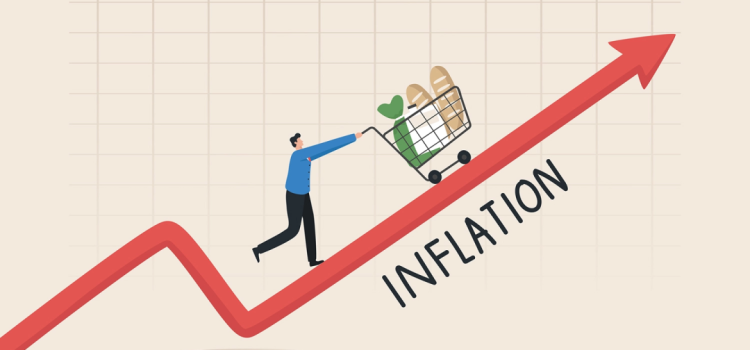
Introduction
Inflation is back in the spotlight as rising prices squeeze household budgets and test business plans. When the cost of groceries, gas, and rent jumps, many people wonder how to keep up. Inflation insights help you understand what drives price increases and how to protect your finances. In this article, we’ll explain the main causes of inflation, show how it affects your daily life, and share simple strategies to navigate today’s economy with confidence.
What Is Inflation and Why It Happens
Inflation means the general level of prices goes up over time. When inflation is low and steady—around 2% per year—it signals a healthy economy. But when it rises sharply, your money buys less than before. Key factors driving inflation include:
- Demand-Pull Inflation: When people have more money to spend, they buy more goods and services. If supply can’t keep up, prices rise.
- Cost-Push Inflation: When the cost to produce goods goes up (for example, higher oil prices or wages), companies pass those costs to consumers.
- Supply Chain Disruptions: Events like pandemics or natural disasters can slow factories and shipping, creating shortages that push prices higher.
- Monetary Policy: Central banks control interest rates and money supply. Lower rates and more money in circulation can fuel higher inflation if too much cash chases too few goods.
By understanding these causes, you gain inflation insights that help explain why your favorite products now cost more.
How Rising Prices Affect Your Daily Life
Even small inflation changes add up quickly across everyday expenses:
- Groceries: A 10% jump means a $200 weekly grocery bill becomes $220. Over a year, that’s over $1,000 more.
- Gas and Transportation: Higher fuel prices hit commuters. If you spend $50 weekly on gas, a 20% increase adds $10 per fill-up.
- Rent and Housing: Rents often adjust yearly. A 5% rent hike on a $1,000 monthly apartment adds $50 to your bill each month.
- Utilities: Energy and water costs can spike with inflation, affecting your heating and cooling budgets.
- Discretionary Spending: Dining out, entertainment, and travel cost more, leading many to cut back on non-essential purchases.
These daily effects underscore why navigating rising prices matters for every household.
Strategies to Manage Inflation in Your Budget
1. Track Your Spending
Start by reviewing recent bank and credit card statements. Identify which categories—food, transport, utilities—have seen the biggest jumps. Apps like Mint or You Need a Budget let you set alerts when you exceed your limits.
2. Adjust Your Budget
Once you know where prices rise most, reallocate funds. For example, if you spend $300 monthly on dining out but groceries rose sharply, reduce restaurant meals by half and cook more at home. Even small shifts free up money for essentials.
3. Negotiate Recurring Bills
Call your internet, phone, and insurance providers to ask for discounts or promotions. Many companies offer loyalty deals if you simply request them. A $10 monthly saving adds up to $120 a year.
4. Shop Smart
- Use Coupons and Cashback: Digital coupon apps and credit cards with cashback help you save on essential purchases.
- Buy in Bulk: Non-perishable goods often cost less per unit when bought in bulk.
- Pick Store Brands: Generic brands deliver similar quality at lower prices.
These small habits can reduce your grocery and household bills by 10–20%.
5. Build an Emergency Fund
Inflation reduces the real value of cash, but an emergency fund is still vital. Aim for three to six months of living expenses in a high-yield savings account. This cushion helps you handle unexpected costs without resorting to high-interest debt.
Protecting Your Investments Against Inflation
1. Diversify Your Portfolio
Spread your investments across stocks, bonds, real estate, and commodities. Stocks often outpace inflation over the long term, while bonds provide stability.
2. Consider Inflation-Protected Securities
U.S. Treasury Inflation-Protected Securities (TIPS) adjust their principal value with inflation. They pay a fixed interest rate on the increased principal, preserving your purchasing power.
3. Invest in Real Assets
Real estate, commodities like gold, and infrastructure funds often hold value during inflationary periods. Rental income can increase with inflation, and commodity prices tend to rise.
4. Review Debt Strategy
Inflation erodes the real cost of fixed-rate debt. If you have a 30-year mortgage at a low fixed rate, inflation reduces its burden over time. Avoid variable-rate loans during high inflation, as rates may adjust upward.
By aligning investments with inflation trends, you maintain wealth growth and guard against price erosion.
The Role of Government and Central Banks
Central banks, like the U.S. Federal Reserve, fight high inflation by raising interest rates. Higher rates make borrowing more expensive, slowing spending and cooling price growth. Governments can also address supply chain issues, invest in infrastructure, and regulate key markets like energy to ease cost-push pressures.
While these measures help, they often have a lag—policy changes may take months to impact consumer prices. Staying informed on economic news and policy decisions enhances your inflation insights and helps you make timely financial choices.
Long-Term Outlook and What Comes Next
Economists expect inflation to moderate as supply chains heal and central banks exert pressure. However, some factors—like climate-related crop failures or geopolitical tensions—could keep core prices elevated. Staying adaptable in your budget and investments ensures you navigate both ups and downs.
Continue tracking price indexes, such as the Consumer Price Index (CPI), and watch for key economic signals: unemployment rates, GDP growth, and central bank statements. This ongoing vigilance gives you the best chance to weather inflationary storms.
Conclusion
Inflation insights guide you through the challenge of rising prices in today’s economy. By understanding what drives inflation—demand surges, higher production costs, and policy decisions—you can adjust your budget, negotiate bills, and shop strategically. Building an emergency fund and diversifying investments with inflation-protected assets preserves your purchasing power. While central banks and governments work to stabilize prices, your proactive steps make a difference right now. With clear tracking, smart spending, and informed investing, you can maintain financial health and confidence—even as the cost of living climbs.








